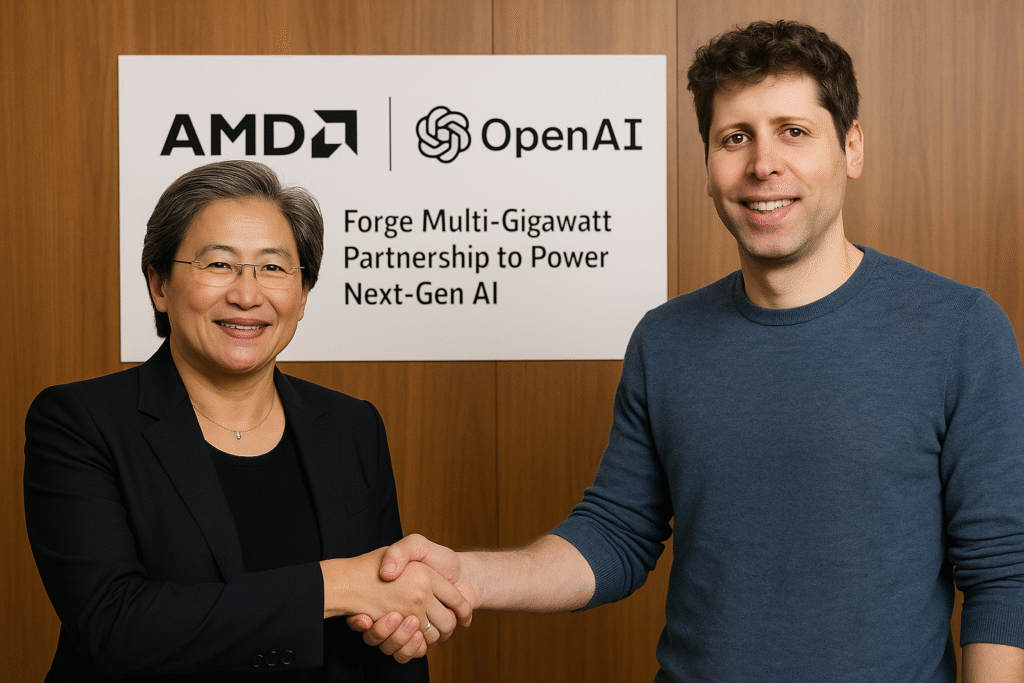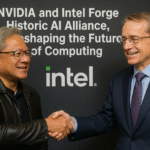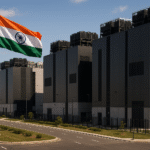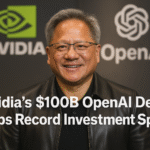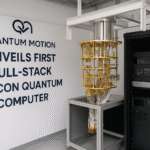By Harshit | 9 October 2025 | Santa Clara | 11:00 AM PDT
AMD’s AI Ambition Hits New Heights
Once a scrappy underdog in the semiconductor space, AMD has now emerged as a key architect of global AI infrastructure. Its recent multi-year partnership with OpenAI marks a transformative moment for the data center industry, combining technological innovation with strategic scale.
The centerpiece of the deal is staggering: OpenAI will deploy up to six gigawatts of AMD Instinct GPUs, starting with one gigawatt of MI450 accelerators in the latter half of 2026. For context, this represents one of the largest-scale AI hardware deployments ever announced.
As AMD EVP and GM of data center solutions Forrest Norrod explained, “This deal is hugely transformative, not just for AMD, but also for the dynamics of the industry writ large. It is a strong endorsement of AMD’s technology and its suitability for deployment at the largest scale for the most important models.”
This partnership is not a typical supplier agreement. OpenAI has the option to acquire up to 160 million AMD shares (nearly 10% of the company) based on deployment milestones and stock price thresholds, creating a performance-based alignment that ties both companies to mutual success.
Power Metrics Define AI Scale
One of the most notable aspects of the partnership is how AMD and OpenAI measure scale in gigawatts rather than chips or FLOPS. This energy-centric perspective reflects a shift in data center strategy, emphasizing power engineering, thermal efficiency, and systems integration alongside raw silicon performance.
AMD’s Helios rack-scale solution embodies this approach, integrating GPUs, CPUs, networking, and telemetry into a single, compact system. This holistic design enables optimized deployment for AI workloads, ensuring maximum performance while simplifying operations for hyperscale environments.
The recent acquisition of ZT Systems, a specialist in large-scale system design, complements this strategy. ZT’s expertise ensures that AMD can deliver vertically integrated solutions — fully engineered AI data center pods rather than individual components — facilitating rapid, modular deployments.
Credibility Through Experience
AMD’s relationship with OpenAI is the product of years of iterative collaboration. It began with the MI300 GPUs, which OpenAI initially tested for GPT workloads within Microsoft’s data centers. Over the last 18 months, AMD worked closely with OpenAI on Triton, the AI compiler for GPU kernels, shaping the MI450 to meet real-world operational needs.
As Norrod emphasized, “OpenAI’s commitment didn’t come from a casual date. It came from working with OpenAI for several years, having them gradually build up confidence in our capabilities.” The new multi-gigawatt agreement signals AMD’s ascension to top-tier AI infrastructure provider status.
Industry Implications
The partnership has broad ramifications beyond AMD and OpenAI. Historically dominated by Nvidia, the AI infrastructure market now faces increased competition and diversification, which could accelerate innovation across hardware, software frameworks, networking, and power systems.
Scaling deployments in gigawatt units will also reshape how data centers are financed and built. Multi-gigawatt agreements involve billions in power, cooling, and real estate investments, encouraging modular, pre-engineered solutions like Helios. This approach could reduce time-to-market, enhance operational predictability, and make global AI infrastructure expansion more capital-efficient.
AMD’s Strategic Transformation
Two decades ago, few could have imagined AMD supplying the backbone of a major AI platform. Today, the company’s position reflects a full-scale strategic transformation from a chip vendor into a systems-level, hyperscale infrastructure innovator.
This deal underscores AMD’s growing influence in the AI era, its ability to partner with leading technology companies, and its role in shaping the future of AI deployment on a global scale. With OpenAI, AMD is not just participating in the AI revolution — it is helping to define it.

